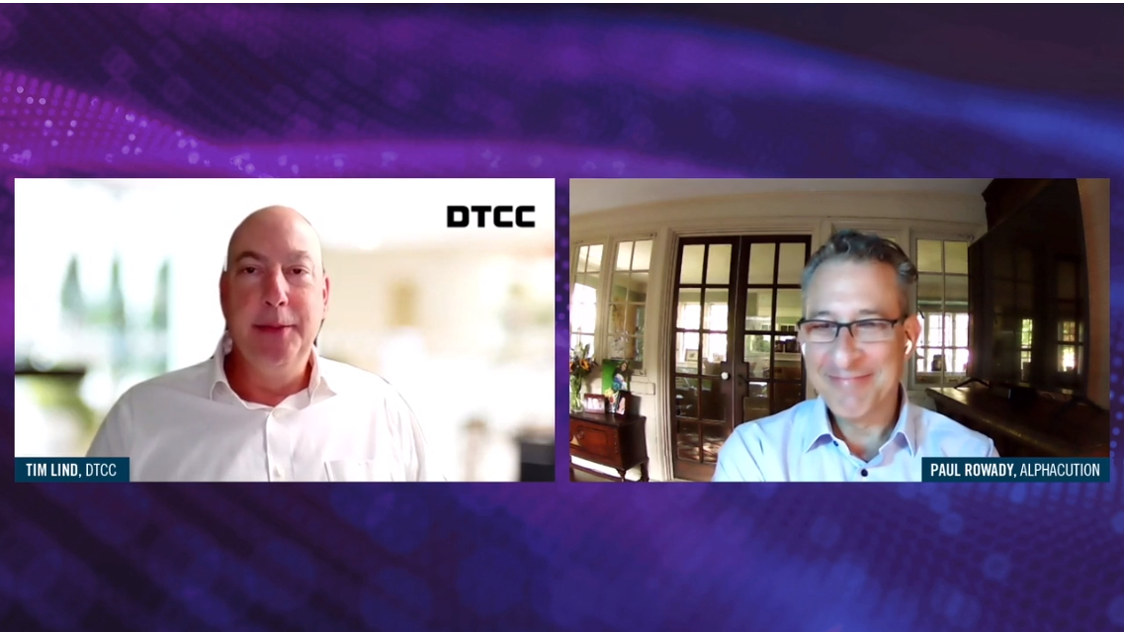In this FIRST of a five-part video blog series Jim Jockle, CMO of Numerix sits down with Paul Rowady, Director of Research at Alphacution to discuss the recent FinTech Revolution. They discuss how firms are gearing themselves towards a digital culture, and how companies are working to distinguish themselves in this new age.
The five videos cover the following:
Part 1: Paralysis by Analysis: Preparation & Analyzation for Digital Disruption
Part 2: IT Outsourcing and Transformation
Part 3: Revolutionizing Fintech: Looking into the world of Data Automation
Part 4: Technological Implications of Cultural Transformation
Part 5: Digital Noise in the Fintech Space
Jim Jockle (Host): Hi, welcome to Numerix video blog, I’m your host Jim Jockle. Joining me today is Director of Research at Alphacution, Paul Rowady. Paul, thanks for joining us again.
Paul Rowady (Guest): Great to be here, Jim.
Jockle: So, want to talk again a little bit more about the Fintech Revolution and digital disruption trend that so much is being discussed on. But I think we need to get a little bit more specific and I want to really start with the first question around how should businesses be thinking about digital disruption and developing a digital culture.
Rowady: Yeah, it’s a great topic and a great question. And as you know, what I like to do, is, there’s a lot of mythology around labeling and terminology. There’s a lot of terms like high frequency trading that gets stretched over things that aren’t really high frequency trading as an example. So, in trying to set some clarity to, say for instance Fintech, I view largely as a new and evolving toolkit based on the latest technologies. Whereas digital transformation digital disruption is really the larger piece. Fintech is underneath that. Digital transformation is a whole cultural evolution where you’re changing skill mix, you’re engaging in a ton of very tedious, if not painful, process re-engineering. And occasionally, given the mass technical leverage, or mass efficiencies of new Fintech solutions. Maybe it’s something in the cloud genre or in infrastructure as a service or very specific, you know distributed ledger technology. You can engage in process replacement, where you literally can do an order of magnitude transformation from a very manual analog era process and engage and move towards a more digital process that has way more technical leverage. Much more efficient use of human capital which tends to represent the biggest piece of the cost and which gets us back to your question about the culture. It’s the people, the special sauce is the people and especially the larger enterprises where it’s the most difficult. It’s engaging in that skills mix transformation that actually allows you to utilize some of the new tools. If you don’t engage in the skills mix, which gets to the cultural component of it, then you can’t as easily or efficiently or as quickly get to using the new tools. So, you definitely have to think about and its sponsorship from the top that leadership has to take on a digital mindset and then drive that eventual skills mix transformation which takes a long time; big organizations it can take years really to unwind long term deals, long-term contracts, separate people from their attachment to legacy solutions, you get how complex it can be.
Jockle: So, arguably one of the things that have been discussed is the concept of paralysis by analysis in terms of where to start and I think as we were preparing for our discussion we talked and joked a little bit around in terms of taking an inch and that inch could lead to a mile as it relates to transformation. But so many institutions we saw in the journal this week, that you know millions are being spent but you know there’s significant challenges in terms of bringing and onboarding the right people, developing that culture. So, from a best practice of some of what you’ve seen in the marketplace, how do you get that inch that’s going to transform meaningful dollars back into the balance sheet?
Rowady: So this is a reference if you pay close attention to some of the things I write about. I love to fall back on the quote the Al Pacino pep talk in Any Given Sunday, where he says “the inches we need, you know it’s a game of inches and the inches we need are all around us.” So if you haven’t seen that, look that up on YouTube. It’s a great Al Pacino riff that makes him so awesome. But it’s relevant to what we’re thinking about here. A lot of times you think oh I’m just going to do cloud or I’m just going to do this new payment solution or I’m going to go mobile or I’m going to adopt this new open-source mechanism. Easier said than done and a lot of where we are in the transformation, we’re really on the early side of the hype cycle. In other words, there’s going to be the hype will come and go and then the maturation will allow actual real adoption. I think with some of the cloud strategies you’re already seeing that with the success of Azure and AWS and even Google now getting in and HPE and what they’re trying to do; you see much more adoption. What we are focusing on at Alphacution, a core of the research that we’re doing is that I’ve determined that there is a lack of navigational tools that allow you to measure the progress of your transformation, right. And so there’s a lot of lip service being paid to TCO, what a solution costs, how do I do the bake-off between my analog stack and my new hybrid stack or my new digital stack and so what I’m trying to do is develop those navigational tools so you can benchmark not only with your completion or your peers or your community. Where already we’ve determined that a lot of these businesses have similar technical signatures. In other words, they leave the way they spend and the tools that they use are like crumbs left behind. That if you watch them closely enough you can actually tell what kind of business it is and whether they’re leading or lagging.
This kind of navigation albeit and I wrote something about this recently on my blog, it’s the sexton vs. the GPS. We’re nowhere near GPS. What I’m doing and what anybody’s doing we’re nowhere near the level of automation and global efficiency to be able to provide these navigational tools at that level but given what I’ve determined to be the absence of any tools the fact that we’re developing a sextant is extremely valuable. And so I think the shortest answer to your question is quantifying where you are and then monitoring how and benchmarking how those spending patterns move over time, not only in relationship to your community, but in relationship to your former self and those are sort of the guideposts, the inches, the first downs, the touchdowns, that give you feedback, that is essentially the feedback loop for whether you’re creating any progress or not, given cultural transformation. Given human capital skills mix transformation. Given the mass expansion of supply chain and financial services, which is a whole new concept. Talent supply chain management, just supply chain given all the fragmentation that’s available in the stack, in the workflow, across regions, across businesses. And we’re working on trying to provide tools to give you some kind of navigational impact where there really is none.



